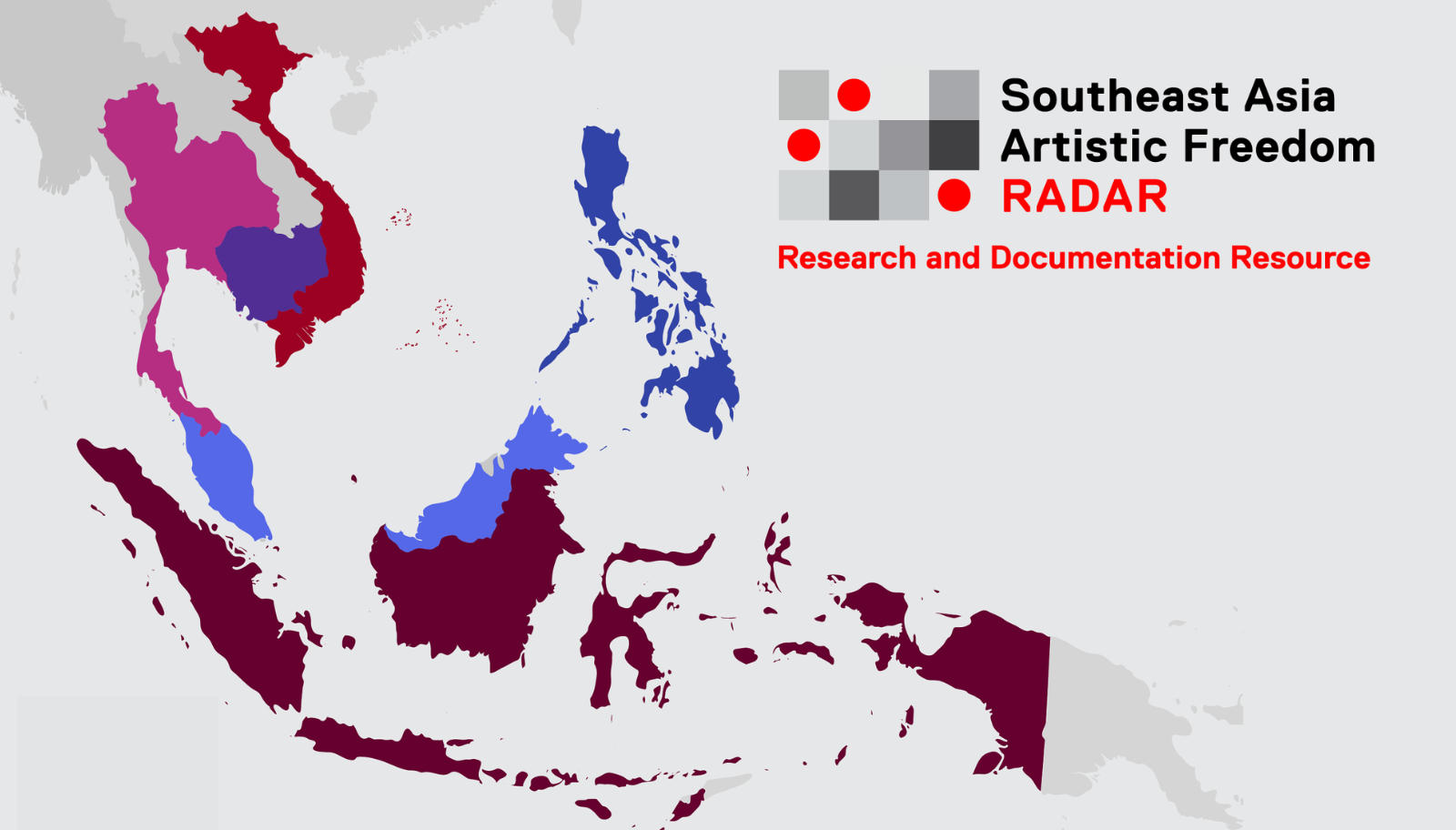
ABOUT THE PROJECT
What we do
The Southeast Asian Artistic Freedom RADAR (Research and Documentation Resource) launched in 2022, documents violations of artistic freedom in Southeast Asia. Our searchable database has over 800 cases of challenges to artistic freedom in the region, going back to 2010. New cases are uploaded periodically.
The research currently documents cases in Cambodia, Indonesia, Malaysia, Thailand, the Philippines and Vietnam. Other Southeast Asian countries will be added progressively from 2025.
We produce country and thematic reports about the state of artistic freedom in Southeast Asia annually. We also conduct research into other aspects of the art making environment in the region.
Why we do it
Oppression of artistic expression is often overlooked compared to the more visible targeting of journalists and human rights defenders. Yet, the treatment of a poet or filmmaker reveals the soft edges of creeping oppression and its effect on civil space, well before it spreads and deepens across society.
Many artists use their works to challenge systems of political patronage and corruption, systemic injustices, environmental abuse. At risk to themselves, they speak up for gender equality and diversity. In these subtle but powerful ways, artists can bring changes which support sustainable development.
Artistic freedom is both an indicator of the level of tolerance in society, and a necessary element in the creation of inclusive, equitable societies.
Objectives
To centralise information about attacks on freedom of expression of arts and culture in Southeast Asia, into a fully searchable database.
Through longitudinal research, identify threats, patterns, and emerging trends in the ways that artistic freedom is challenged in Southeast Asia.
Produce reports, analysis and statistics to support the work of stakeholders, including artists, rights-advocates, researchers and policy makers to defend artistic freedom in the region.
Our approach
All persons enjoy the rights to freedom of expression and creativity, to participate in cultural life and to enjoy the arts. Expressions, whether artistic or not, always remain protected under the right to freedom of expression.
Faridah Shaheed, UN Special Rapporteur
in the Field of Cultural Rights (2009 – 2015)
Artistic freedom is a basic human right guaranteed in Article 27 of the Universal Declaration of Human Rights (UDHR). The 2005 Unesco Convention on the Protection and Promotion of the Diversity of Cultural Expression states that every person has:
- The right to create without censorship or intimidation
- The right to have artistic work supported, distributed, and remunerated
- The right to freedom of movement
- The right to freedom of association
- The right to protection of social and cultural rights
- The right to participate in cultural life
